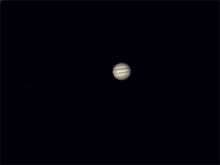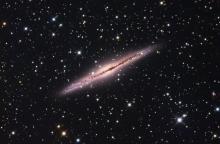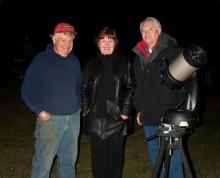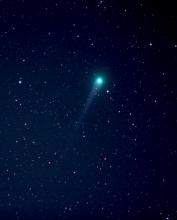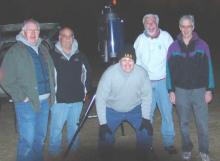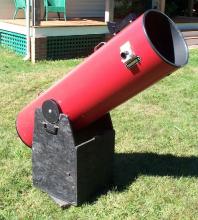Don't miss the meeting, coming up this week!
Feed aggregator
Neptune-like exoplanets can be cloudy or clear
Astronomers have shown new atmospheric detail in a set of 15 exoplanets similar to Neptune. While none could support humanity, a better understanding of their behavior might help us to understand why we don't have a small Neptune, while most solar systems seem to feature a planet of this class.
Gas on the run -- ALMA spots the shadow of a molecular outflow from a quasar when the Universe was less than one billion years old
Theoretical predictions have been confirmed with the discovery of an outflow of molecular gas from a quasar when the Universe was less than a billion years old.
Bright galaxies put dark matter to the test
The earliest galaxies are thought to have formed as the gravitational pull of dark matter, which has been impossible to study directly, slowly drew in enough hydrogen and helium to ignite stars. But astrophysicists now show that after the Big Bang, hydrogen and helium gas bounced at supersonic speeds off dense, slowly moving clumps of cold dark matter. When the gas fell back in millennia later, stars formed all at once, creating small, exceptionally bright galaxies. If models of cold dark matter are correct, the James Webb Space Telescope should be able to find patches of bright galaxies in the early universe, potentially offering the first effective test for theories about dark matter. If it doesn't, scientists have to go back to the drawing board with dark matter.
The hottest catalog of the year: Comprehensive list of slow-building solar flares
Although solar flares have been classified based on the amount of energy they emit at their peak, there has not been significant study into differentiating flares since slow-building flares were first discovered in the 1980s. Scientists have now shown that there is a significant amount of slower-type flares worthy of further investigation.
Staggering structure in 19 nearby spiral galaxies
The James Webb Space Telescope observed 19 nearby face-on spiral galaxies in near- and mid-infrared light as part of its contributions to the Physics at High Angular resolution in Nearby GalaxieS (PHANGS) program.
Researchers spying for signs of life among exoplanet atmospheres
The next generation of advanced telescopes could sharpen the hunt for potential extraterrestrial life by closely scrutinizing the atmospheres of nearby exoplanets, new research suggests.
Astronomers spot 18 black holes gobbling up nearby stars
Scientists have identified 18 new tidal disruption events (TDEs) -- extreme instances when a nearby star is tidally drawn into a black hole and ripped to shreds. The detections more than double the number of known TDEs in the nearby universe.
Cosmic building blocks of life discovered through the electron microscope
Meteorites are fragments of asteroids which find their way to Earth as shooting stars and provide information on the origins of our solar system. A team of researchers has examined the so-called Winchcombe meteorite and demonstrated the existence in it of nitrogen compounds such as amino acids and heterocyclic hydrocarbons -- without applying any chemical treatment and by using a new type of detector design.
Astronomers unravel mysteries of planet formation and evolution in distant planetary system
TOI-1136, a dwarf star located more than 270 light years from Earth, is host to six confirmed exoplanets and a seventh as yet unconfirmed candidate. The system has provided a rich source of information on planet formation and evolution in a young solar system. Researchers used a variety of tools to compile radial velocity and transit timing variation readings to derive highly precise measurements of the exoplants' masses, orbital information and atmospheres.












